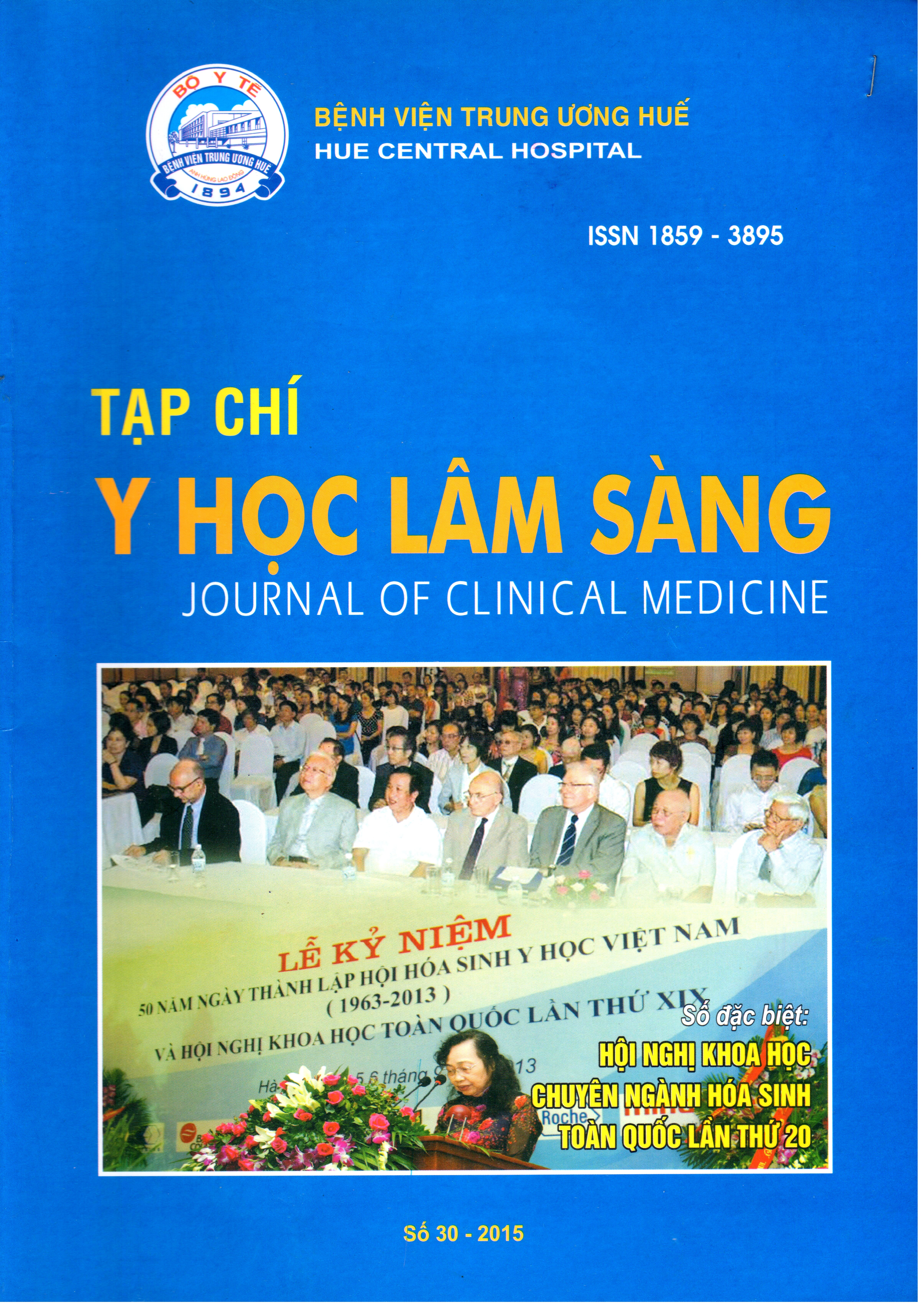Abstract
Objective: 1. To determine concentration and the prevalence of glutamic acid decarboxylase antibody (GADA) positive in non overweight- obesity diabetic patients; 2. Compare some clinical, paraclinical and treatment characteristics between group with and without GADA.
Methods: A cross-sectional study on 109 non overweight- obesity diabetic patients at Hoan My hospitap Ho Chi Minh city from May 2009 to February 2010. Clinical data were obtained and a blood sample taken to measure autoantibodies glutamic acid decarboxylase (anti-GAD), glucose, bilan lipid and HbA1C. Positive anti- GAD was determined when autoantibodies to GAD concentration was higher than 1.05 U/ml. Data were analysed by SPSS version 13.0 sofware.
Results: In non overweight- obesity diabetic patients group, the average concentration of GADA was 0.71±0.56 (u/ml). The prevalences of GADA positive was 11.01%. The prevalence of GADA positive patients initially diagnosed as non overweight- obesity diabetic was 7.69%.
The patient with GADA had not history of obesity. Comparing to the patient without GADA group, the onset-age (<60 years-old) and time of respond positively to oral medicine in this group were lower than. Inversely, the rate of using insulin in the patient with GADA group was earlier than.
Conclusion: It should be to determine the GADA concentration in non overweight- obesity diabetic patients
References
Tạ Văn Bình (2006), Bệnh Đái tháo đường và tăng glucose máu, Nhà xuất bản Y học, Hà Nội.
Britten AC, Jones K, Törn C, Hillman M, Ekholm B, Kumar S, Barnett AH, Kelly MA (2007), "Latent autoimmune diabetes in adults in a South Asian population of the UK", Diabetes Care, 30(12): 3088-90.
Buzzetti R, Di Pietro S, Giaccari A, Petrone A, Locatelli M, Suraci C, Capizzi M, Arpi ML, Bazzigaluppi E, Dotta F, Bosi E (2007), "Non Insulin Requiring Autoimmune Diabetes Study Group. High titer of autoantibodies to GAD identifies a specific phenotype of adult-onset autoimmune diabetes", Diabetes Care, 30(4): 932-8.
C.S. Kim et al (2006), "Clinical and biochemical characteristics of nonobese type 2 diabetic patients with glutamic acid decarboxylase antibody in Korea", Metabolism Clinical and Experimental, 55: 1107-1112
E. Arikan et al (2005), "The clinical characteristics of latent autoimmune diabetes in adults and its relation with chronic complications in metabolically poor controlled Turkish patients with Type 2 diabetes mellitus", Journal of Diabetes and Its Complications, 19: 254-258
F. Soriguer-Escofet et al (2002), "Prevalence of latent autoimmune diabetes of adults (LADA) in Southern Spain", Diabetes Research and Clinical Practice, 56: 213-220.
K. Hamaguchi et al (2004), "Clinical and genetic characteristics of GAD-antibody positive patients initially diagnosed as having type 2 diabetes", Diabetes Research and Clinical Practice, 66: 163-171
Niskanen LK, Tuomi T, Karjalainen J, Groop LC, Uusitupa MI (1995), "GAD antibodies in NIDDM. Ten-year follow-up from the diagnosis", Diabetes Care, 18(12):1557-65.
S. Fourlanos, F. Dotta, C. J. Greenbaum, J. P. Palmer, O. Rolandsson, P. G. Colman, L. C. Harrison (2005), "Latent Autoimmune Diabetes in Adults (LADA) should be less latent", Diabetologia, 48: 2206-2212.
S. Fourlanos, C. Perry, M.S. Stein, J. Stankovich, L.C. Harrison, P.G. Colman (2006), "Clinical screening tool identifies autoimmune diabetes in adults", Diabetes Care, 29:970-975.
Takeda H, Kawasaki E, Shimizu I, Konoue E, Fujiyama M, et al (2002), "Clinical, autoimmune, and genetic characteristics of adult-onset diabetic patients with GAD autoantibodies in Japan (Ehime Study)", Diabetes Care, 25(6): 995-1001
W.M. Wan Nazaimoon et al (1999), "Prevalence of glutamic acid decarboxylase antibodies amongst young Malaysian diabetics", Diabetes Research and Clinical Practice, 43: 59-66

This work is licensed under a Creative Commons Attribution-NonCommercial-NoDerivatives 4.0 International License.
Copyright (c) 2025 Journal of Clinical Medicine Hue Central Hospital

